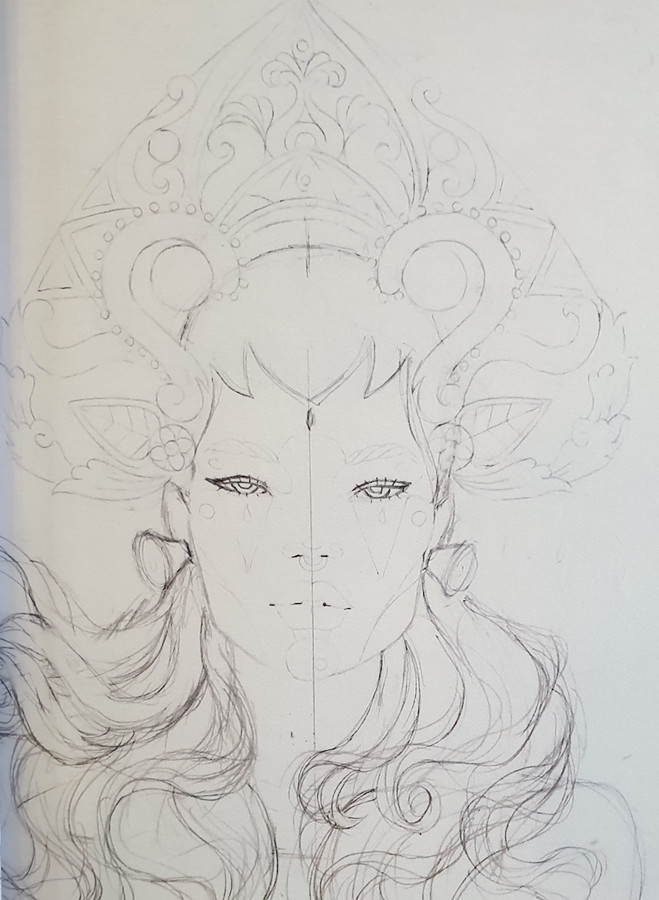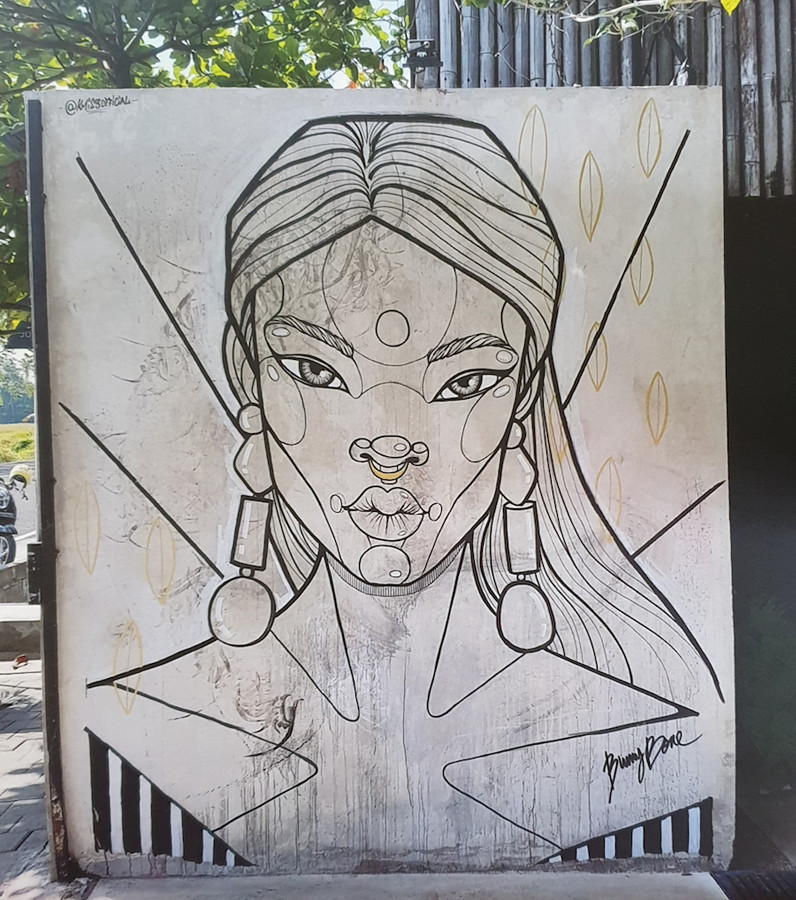“The pandemic triggered me to reflect upon the fragility of being and humanity’s vulnerability to the forces of nature. It has had a powerful impact upon my life,” says contemporary Indonesian artist Bianca Timmerman, who lives in Perenenan, South Bali. “The threat of the virus required me to become vigilant and more aware; to endeavour not to be ignorant of the world around me.”
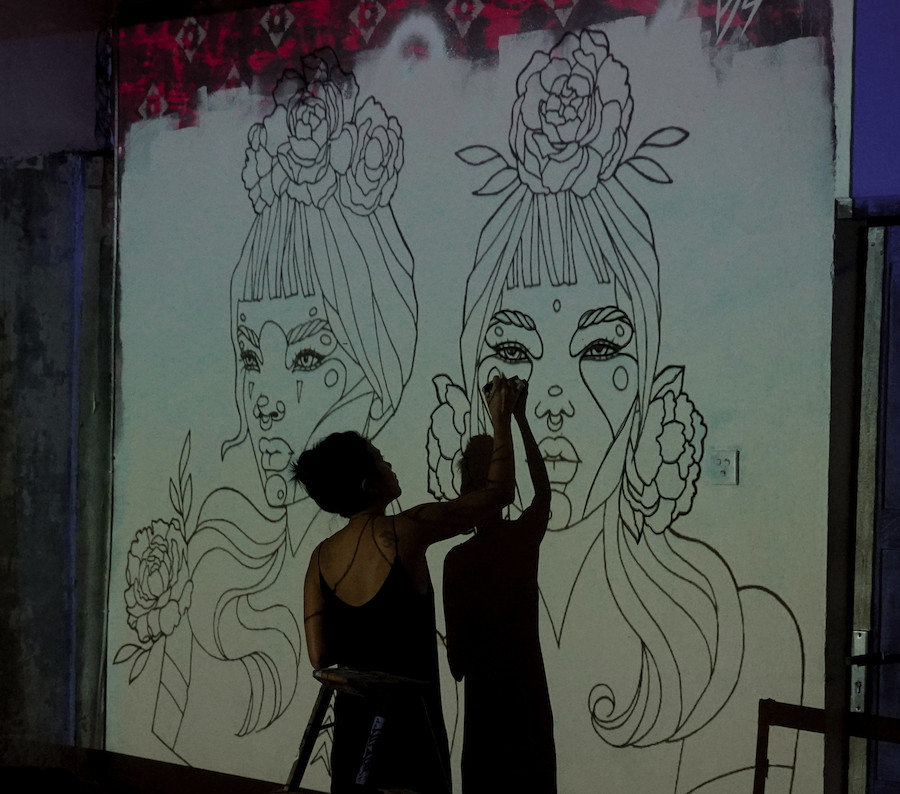
“I surrendered to the unknown of what the pandemic represented and was able to sense the power of nature within my calming refuge. As my fears diminished, I became open to new possibilities.” When the March lockdown began, Bali tourism halted as the global economy faltered. “Sales of my artwork declined. I became financially vulnerable and then desperate. I had to explore options of how to survive.”
“I began thinking of how I could utilise my creativity, not only via my artworks. Why not share what I had acquired by teaching art? The lockdown propelled us all into an unusual inner world, the timing was perfect, however, to learn more about what I love to do. I spent hours watching YouTube tutorials to enhance my creative and technical abilities. My inner voice urged me on; focus on your passion; this is the gateway to grander things during and beyond this period of uncertainty.”
“I then experienced a potent creative explosion,” reveals Bianca, also known as Bunnybone. “I imagined that I had already been teaching art for years, with an established platform earning good money and paying taxes.” Albert Einstein once said, “Imagination is more important than knowledge.” In May 2020 Bunny began teaching art within the public sphere.
2019 sketch by Bunnybone (Left); 2019 painting by Bunnybone. Image courtesy of Nyaman Gallery (Right)
Born in Jakarta in 1985, Bunny visited Bali during her transition from child to adulthood. In 2008 she relocated to the island. A graduate of Fashion Design at ESMOD, Jakarta, 2003-2006 she secured work within the island’s burgeoning fashion industry, employed by various international companies, and brands. In 2015 she started working in fine art, at Nyaman Gallery in Seminyak, for four years. Bunny was encouraged by the gallery’s owner to develop her illustration skills honed in fashion design. Her works evolved into stylistic ink and acrylic depictions of super-chic feminine beauties. Bunny’s gorgeous goddesses presented by the gallery caught the eye of many and found new abodes worldwide.
On the home front, outside of her studio practice, Bunny had more ideas. Rumah Rabbit (rabbit house) grew from her desire to create a collaborative space to support woman and children through creative education. Already experienced in organising cross-cultural happenings via the famous ‘Black Market’ in Kerobokan (2011-2016), Rumah Rabbit is an extension of her core values and vision for building community. “My three female housemates all followed distinct artistic paths. We agreed to decorate the house with our creations and invite friends over for fun social gatherings beginning in March 2018.”
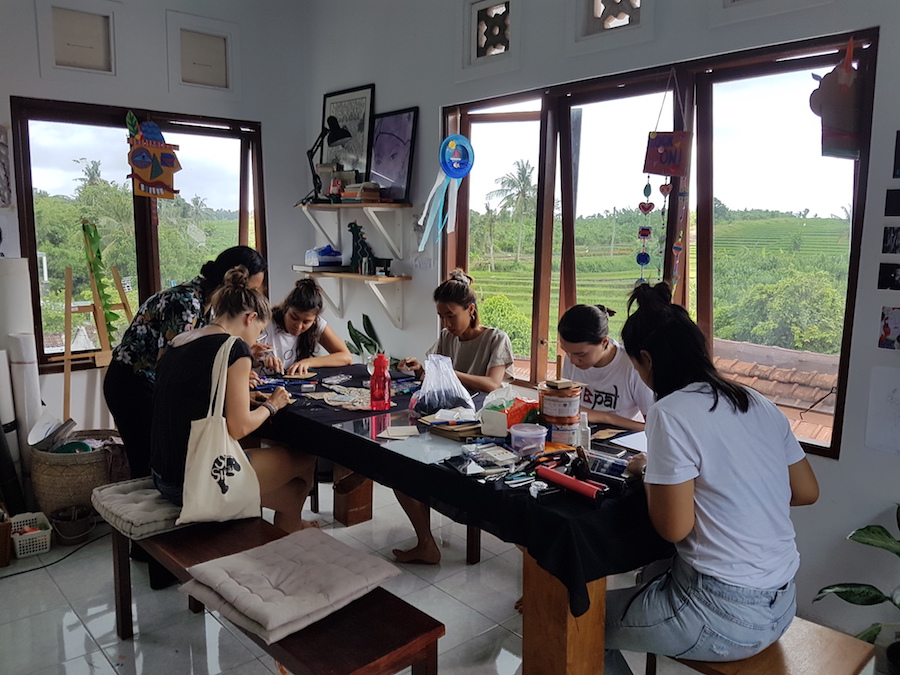
“From June 2020, Rumah Rabbit held free events Show & Tell for only women artists/makers to share and discuss their work, to inspire each other and exchange information. Our pay for workshops include life drawing, bookbinding, linocut printing and macramé workshops. We aimed to support our large network during the perils of the pandemic. The community`’s reaction has been heart-warming. My friends and I sensed that we have tapped into something vital. We are not sure what it is or why, yet the feeling is profound and real.”
“I began advertising my art classes through Instagram and by word of mouth. I was very surprised by the response,” Bunny admits. “I teach children and adults; my main focus is children; their capabilities and imagination are vastly different from adults. I hold classes almost every day, sometimes twice a day, with groups up to four. Regular students now number ten, while I have taught more than fifty people, including parents. Students come from the Canggu area and Denpasar, even as far as Ubud.”
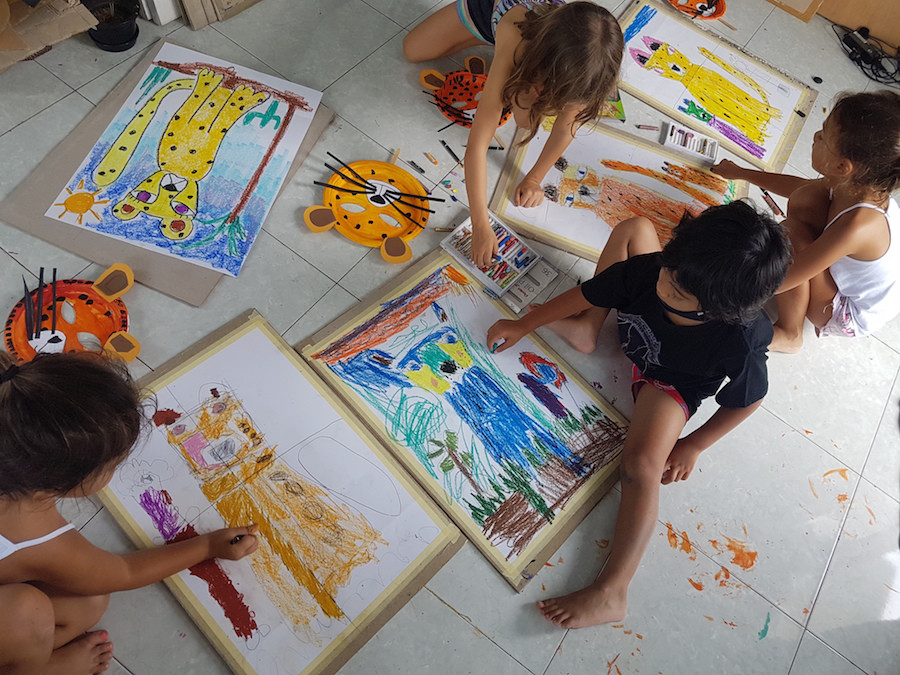
“Teaching children is a special skill,” Bunny explains. “I must constantly be one step ahead, continually feeding their hunger for learning and inspiring them with colourful and diverse activities. I am not a qualified teacher, yet I am prepared to work hard to learn more. YouTube is invaluable, and I now understand new skills presented by academic and non-academic teachers. I believe I am growing and becoming a better teacher.”
Reflecting on her recent creative development, Bunny said, “Children are playful, fearless and spontaneous. They inspire me to try and break free from some of my own preconditioned mental boundaries. Working with them has triggered an abundance of imaginative ideas for my artwork. The challenge each artist faces is how to innovate and create a distinctive voice of their own. I have entered a new period, and I trust in my process to allow this to unfold.”
The life drawing classes at Rumah Rabbit (learning the principles of drawing through careful study of the human form) have been the perfect tool for Bunny to learn about anatomy and perspective. “My drawings are becoming academically stronger through the introduction of structured 3-dimensionality and realistic figurative volume. I am understanding the potential of a pencil to create shadow and light. I have also discovered a new sense of courage to explore colour expression, thanks to the children.”
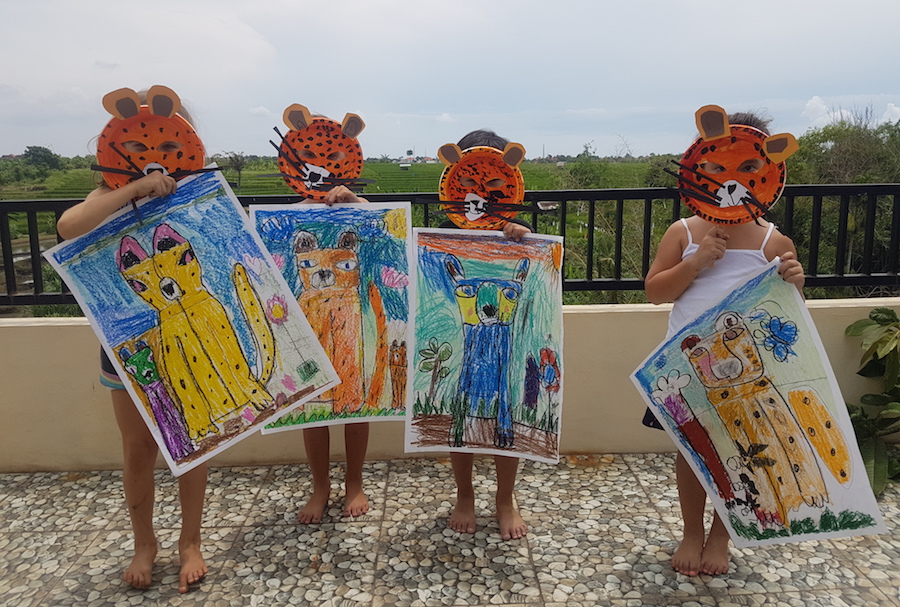
The most surprising outcomes have been with her students aged between 4 – 9 years Bunny says. “Certain students are flourishing creatively and technically, while their level of imaginative enquiry is increasing. I feel gratitude and joy because I may impact upon their positive progression. My responsibility is to nurture them. This experience enriches my well-being.” Art teaches us how to express ourselves in ways that cannot be expressed in words. Art demonstrates how to interpret the world via our imagination and is a portal to innovation. Art communicates about new ideas and the world around us. Art is a modality of self-healing, open and accessible to everyone. During the pandemic, art’s functional values increasingly serve and support humanities’ individual and collective constructive development.
The Island of the Gods is the perfect learning environment. The landscape is fertile and abundant; while the unseen elements are transformational. The Balinese have refined many aspects of the creative human experience within their living culture – art is life. The unique capacity for individual and collective evolution and education is at the heart of Bali’s sacred life force. This potent creativity, however, is an aspect of the island’s international branding that the tourism industry has yet to fully comprehend.
Instagram: @bunnybone @rumahrabbit
Written by Richard Horstman, Bali art expert, at lifeasartasia.art and on Instagram @lifeasartartasia.

